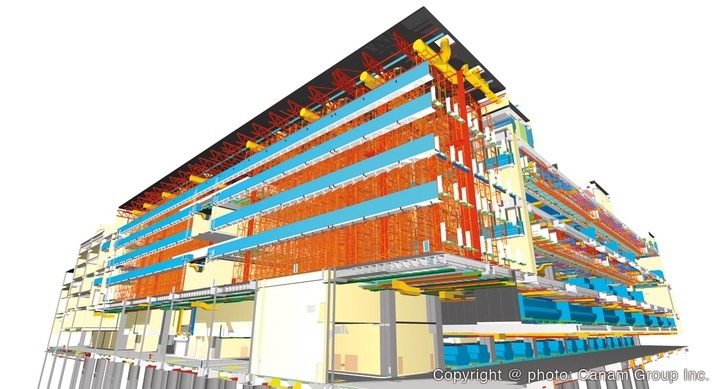James Boland, the president of the International Union of Bricklayers and Allied Craftworkers (IUBAC), has written a post on builtworlds.com that may resonate with a lot of you. It’s titled Union Perspective: Ignoring BIM at Our Peril. He weighs in on an issue that we’ve all been hearing a lot about these days–the difficulty that traditional craftsmen have when adapting to new technologies.
We are accustomed to hearing about the challenges that surveyors face when adopting 3D scanning technology, so its quite interesting to hear about it from the point of view of another old and venerable profession.
“BIM, a process for designing and building that saves time and cost, improves estimation accuracy, reduces waste and avoids conflicts in the field, is not new to the construction industry,” writes Boland. “Yet the masonry trades lag well behind most others — including concrete placement and steel — in developing tools specifically designed to improve trade-specific planning and execution through BIM.”
The article argues that if “the masonry trades” fail to adopt BIM properly, they “risk contributing to their own obsolescence.”
Why aren’t the masonry trades using BIM? Based on conversations I’ve had at conferences, it seems many people are either too set in their ways to change, or haven’t really been shown how a change can be helpful to them. Part of this is our fault as an industry, because we often hype BIM and other processes or technologies as a solution to all the problems a company might have, but don’t do a great job educating people with how to apply those technologies properly.

To his credit, Boland entices the masonry trades by listing the benefits of BIM, but doesn’t stop there. Sure, he notes that “its 3D visualizations provide a digital representation of the building, from exterior to interior, which makes scheduling, estimating, site planning and record keeping more accurate and user friendly.” But after his sales hook, he draws them to the BIM for Masonry Initiative, which promises education for those masonry tradespeople who are interested in learning more.
It’s a good model–entice, then educate. It’s also a necessary one: Boland says the masonry trades need to get on board with BIM because designers, architects, engineers, contractors, and so on are already using it to “facilitate smoother workflows and collaboration.” The masonry trades, he argues, need to get into BIM, and join in the process of collaboration, or they are going to be left behind when the train leaves the station.
On this point, the article quotes David Biggs, P.E., S.E., who is both a teacher and the head of the BIM for Masonry Initiative as saying, “If we don’t incorporate BIM technology into the masonry industry, masonry will seem difficult to work with and become uncompetitive. It is no doubt the future of masonry. It’s not a choice, but a must.”






